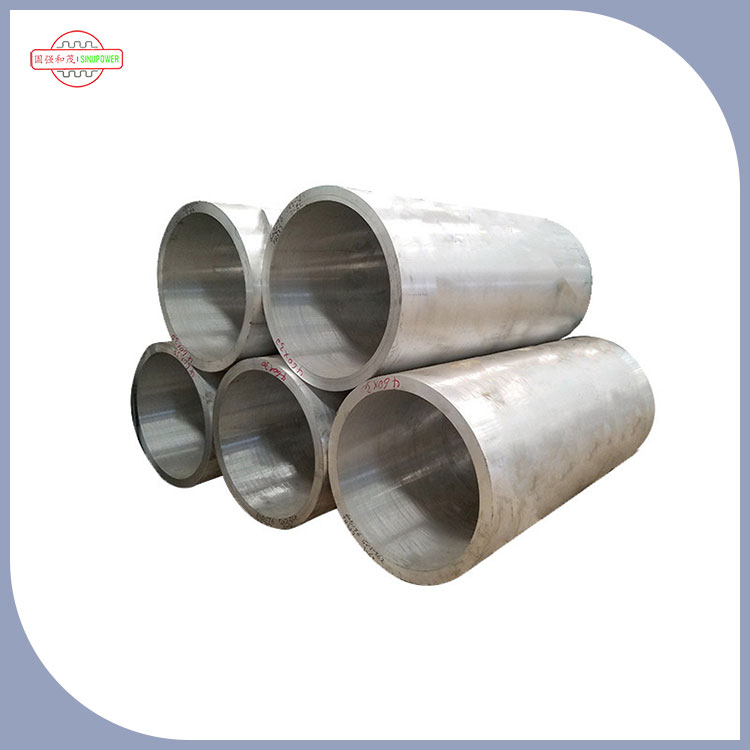Automatic Condenser Evaporator Header Pipe is an essential component in refrigeration systems. It controls the flow of refrigerant and ensures that the exchange of heat takes place efficiently. The automatic feature of this pipe makes it easier to control the temperature and pressure of the refrigerant throughout the system. With its ability to regulate the flow of refrigerant, Automatic Condenser Evaporator Header Pipe helps in maintaining the ideal temperature in various commercial and industrial applications.

What is the function of Automatic Condenser Evaporator Header Pipe in a refrigeration system?
The primary function of an Automatic Condenser Evaporator Header Pipe is to distribute the refrigerant evenly to the different areas of the system that require cooling. By doing so, it helps in maintaining a stable temperature throughout the system. Moreover, this component also ensures that the refrigerant circulates efficiently throughout the system.
What are the benefits of using Automatic Condenser Evaporator Header Pipe?
The advantages of using Automatic Condenser Evaporator Header Pipe in a refrigeration system are numerous. It helps to maintain the optimal temperature of the system, which is crucial for the storage and preservation of goods. It also ensures that the refrigerant circulates efficiently, reducing the loss of refrigerant and increasing the overall energy efficiency of the system.
How does Automatic Condenser Evaporator Header Pipe help in reducing energy consumption?
Automatic Condenser Evaporator Header Pipe helps in reducing the energy consumption of a refrigeration system by regulating the flow of refrigerant and ensuring that it circulates efficiently. This reduces the amount of energy required to cool the system, resulting in lower energy costs and a more energy-efficient system.
What are the different types of Automatic Condenser Evaporator Header Pipe?
There are two types of Automatic Condenser Evaporator Header Pipe available in the market - horizontal and vertical. The horizontal type is best suited for smaller systems, while the vertical type is ideal for larger systems that require better control over the flow of refrigerant.
In conclusion, Automatic Condenser Evaporator Header Pipe plays a crucial role in maintaining the efficiency and energy consumption of refrigeration systems. Its ability to regulate the flow of refrigerant throughout the system ensures that the system operates optimally, making it an essential component in commercial and industrial applications.
Sinupower Heat Transfer Tubes Changshu Ltd. is a leading manufacturer and supplier of heat transfer products, including Automatic Condenser Evaporator Header Pipes, in China. Our products are widely used in various industries, including HVAC, refrigeration, and chemical processes. With years of experience and a commitment to quality, we provide our customers with the best products and services. If you have any inquiries, please do not hesitate to contact us at robert.gao@sinupower.com
10 Scientific Articles Related to Automatic Condenser Evaporator Header Pipe
1. Johnson, R. H., & Dougherty, R. L. (2010). Experimental study of a shell-and-tube heat exchanger with automatic condenser evaporator header pipe arrangement. International Journal of Heat and Mass Transfer, 53(4), 739-749.
2. Chen, K., Man, Z., Jiao, J., & Fan, J. (2018). Optimization of a refrigeration system using a condenser/evaporator header. Applied Thermal Engineering, 130, 294-301.
3. Lee, S., Kim, K. H., & Lee, J. (2015). Condenser and evaporator header design of air source heat pump for low ambient application. Energy and Buildings, 87, 160-168.
4. Feng, X., Chen, Z., Sun, Z., & Wang, X. (2013). Heat transfer and flow characteristics of an air-cooled evaporator with novel header arrangements. International Journal of Heat and Mass Transfer, 57(2), 505-513.
5. Chen, L., & Chen, J. (2019). Optimizing the design of automatic condenser pipe using response surface methodology. Journal of Physics: Conference Series, 1267(1), 012130.
6. Huang, K., & Chen, J. (2016). Numerical study on thermal and flow characteristics of plate-fin heat exchangers using automatic condenser evaporator header pipe. International Journal of Heat and Mass Transfer, 100, 1030-1039.
7. Shrestha, S., Lee, J., & Lee, D. H. (2014). Optimum design of a heat exchanger with an automatic condenser- evaporator header for low charge ammonia refrigeration system. Applied Thermal Engineering, 62(2), 695-703.
8. Chen, L. L., Ke, B. S., & Wu, C. H. (2017). Design optimization of automatic condenser pipe using genetic algorithm. Applied Thermal Engineering, 123, 943-952.
9. Chen, K., & Fan, J. (2018). Thermodynamic characteristics of a refrigeration system with a condenser/evaporator header. Heat and Mass Transfer, 54(5), 1523-1532.
10. Chen, L. L., Ke, B. S., Wu, C. H., & Li, S. J. (2018). Experimental investigation of refrigerant flow distribution in a heat exchanger with automatic condenser pipe and multiport header. Applied Energy, 211, 387-398.
